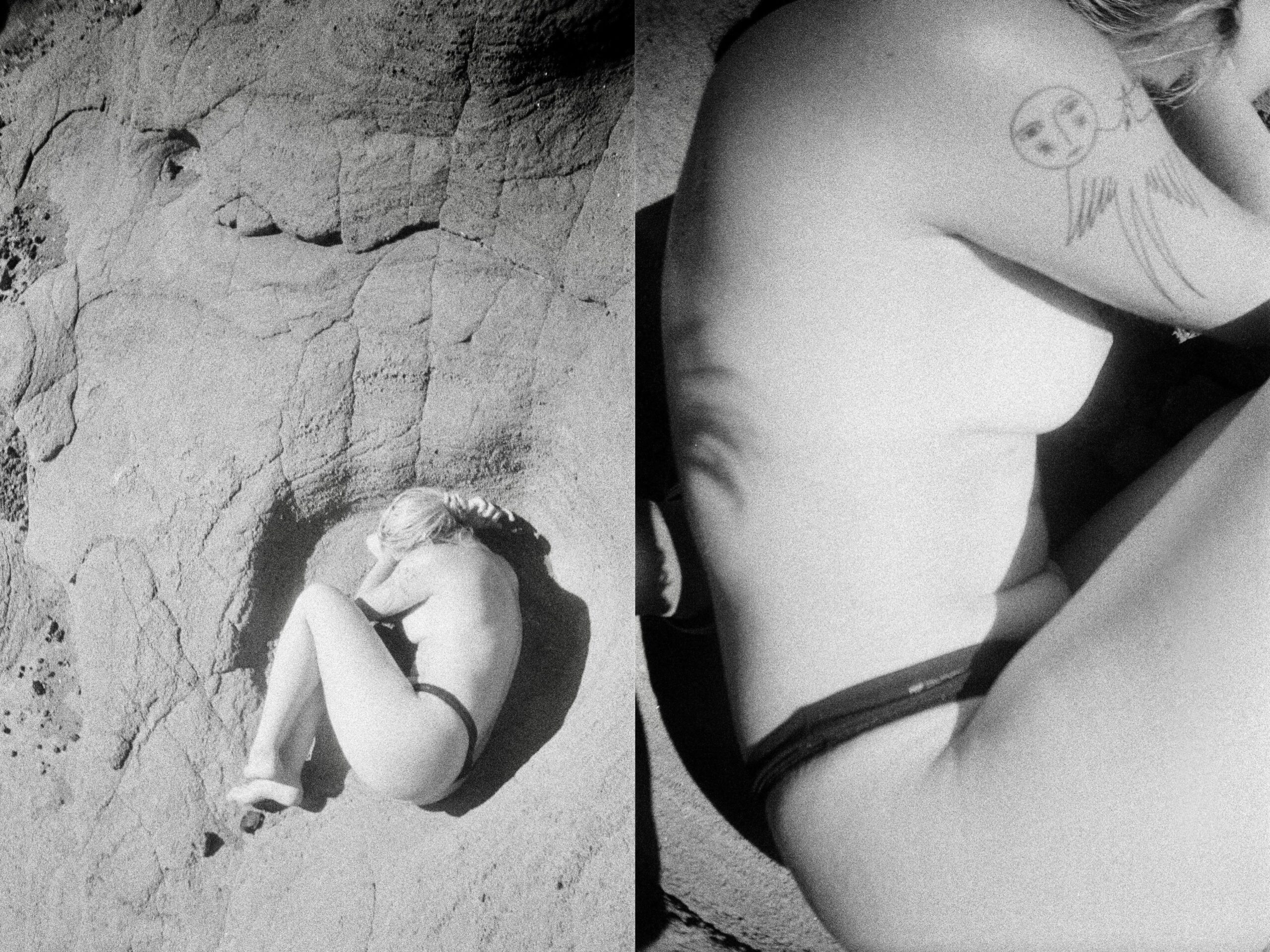Written by Taylor Neal.
Art by Taylor Neal .
Growing up as a dancer, I spent copious amounts of time in spaces with floor to ceiling mirrors lining the walls on a daily basis, surrounded by my peers, forced to be in continuous confrontation with my reflection through the tender days of adolescence and pubescent hormonal influx.
Born and raised as a girl, it is impossible to spend this much time in the mirror with other girls and to not compare yourself to them in some way, especially when you are in the context of a dance class, forced to wear ballet garb, and ridiculed if your “lines aren’t long enough” or you can’t suck your tummy in tight enough. Add to this basis of bodily shame and hatred some layers of gender dysphoria, which, at the time, were understood as standard girls’ media-induced body image issues and responded to with push-up bras and then feeling my skin crawl at the sight of my hyper-feminized body, and let’s just say my relationship with mirrors was extremely complicated growing up.
I started to take inventory on the amount of times in a day I would stop to check my reflection in a window, or go into the bathroom in university, just to check the mirror. If I felt I looked good that day, I would check the mirror just to re-confirm this fact, and revel in the ego boost for the moment spent gazing at my reflection. If I didn’t like how I looked that day, or felt uncomfortable in my clothing, I would spend time with my reflection entertaining a nasty inner-dialogue that would keep me there, stewing in the hatred of what I saw in the mirror, fixing my hair and poking at my skin until I was going to be late for something or until someone caught me.
There are no mirrors in nature.
I slowly began to realize that throughout my life, the times in which I felt most confident, comfortable and grounded in my body, in my skin, were when I was in nature for prolonged periods of time, away from mirrors. Or, away from the human-made, conventional mirrors that adorn the walls of our homes, offices, stores, exercise facilities, and all other indoor spaces, anyway. At some point, it became clear to me: There are no mirrors in nature.
There are many reasons why mirrors become especially challenging after trauma. For some of us, mirror-based somatic embodiment practices can be extremely healing in coming back into relationship with the body and pleasure after sexual trauma, and there is a lot of power in many beautiful practices of this nature.
At other times however, both from my personal experience in healing from sexual trauma as well as supporting others along their own healing journeys, the mirror can be one of the hardest things to face in a traumatized body.
If we experience something that causes us to no longer feel safe and in control and at home in our bodies, to feel “like ourselves,” then confronting the mirror often only further confirms that we no longer feel like ourselves, because we may not be able to recognize ourselves in the reflection we see. Even if nothing about our appearance has changed on the outside, it can feel extremely triggering to look into the mirror after trauma because of the longing we feel for the version of the self that existed before the trauma; the non-traumatized self we wish we could get back.
If you find yourself continuously triggered and in pain each time you look in the mirror, then here’s a very simplified suggestion; remove the mirrors.
After trauma, or during/after a period of time spent processing trauma, many survivors find it extremely challenging to look into the mirror because they no longer recognize themselves in their healing bodies. For some, this can mean that the trauma has lead to lasting physical injuries, dissociation from certain parts of the body and/or shifts in mental health which can cause fluctuations in energy levels, diet, weight, personal hygiene, substance use, and many other changes to our state of being and the way we feel in our bodies.
The issue here is that no matter how much we try to find ourselves again in the reflection we see, we can never go back to “before the trauma.” We can spend hours and all of our energy trying to exercise or brush our hair or covering the bags under our eyes with makeup, but if we are searching for our pre-trauma selves through the version of the self that shows up in the mirror, we may as well find ourselves on a hamster wheel – it will be a never-ending race. Reconnecting to the embodied self after trauma is about rebuilding your home inside of your body, with whatever tools and resources you have in your toolbox. If you find yourself continuously triggered and in pain each time you look in the mirror, then here’s a very simplified suggestion; remove the mirrors.
Literally, take them down off your walls and store them away. There is no reason to be surrounded with something that is actively bringing us pain, especially while we are in the tender process of healing. There is no rulebook to how to be a human that says we must be surrounded by mirrors the way we constantly seem to be, and this comes back to my earlier discussion of mirrors in nature; there simply are none. Sure, there are reflections in nature created by delicate combinations of water and light interacting with earth, but never in nature is there an LED ring-light around a mirror staring us in the face while we brush our teeth. In the same breath, there are infinite mirrors in nature, because in nature we see reflections of our inner landscape; how we feel in our bodies rather than how we look. If you can, get outside and walk around. Escape your reflection.
When trauma has caused us to feel heavy and slow, we can look to the trees and remind ourselves that there is beauty in stillness.
Without the aggression of the mirror, we can remind ourselves that while our trauma is now a part of us, our trauma does not define us. Our bodies may change, we will change, but we are no less whole, we are no less worthy, we are no lesser version of ourselves. We are not measured by our ability to fit back into our old shape and identity, we can simply find comfort in new reflections.
About the Author
(she/they) A Canadian multi-disciplinary artist, writer, yoga instructor and frontline worker, Taylor is committed to an ongoing exploration of intimacy, sexuality, and how humans can foster loving relationships with their bodies. They strive to offer this space with their teachings, art and writing. Practically, Taylor combines their frontline support work with their background in dance and performance, their passion for the written word, and their curiosity within contemporary visual art and photography, with their studies in Communications, Art History, Feminist Theory, Design for Theatre and Fashion Design. Their cumulative work and practice comes together as a holistic exploration of identity, movement, sexuality, and how the embodied subject navigates space and the natural world. To connect with Taylor, you may find them at their website taylorneal.ca, on Instagram @nzzltea, or through their podcast, Full Bloom Pod, on Apple Music and Spotify.
Follow on IG: @nzzltea |

